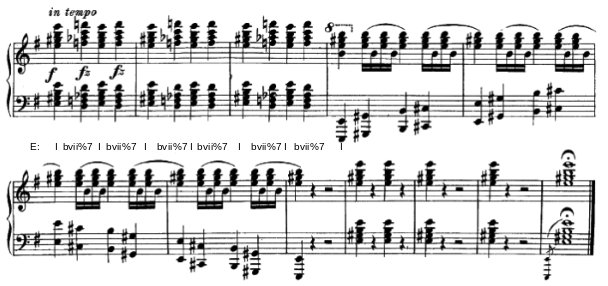What type of cadence is this at the end of Dvorak's 9th symphony (Dvorak's 9th Symphony, 4th movement, Finale - Allegro con fuoco (Meaning: "Fast and Spirited"))? Is it an imperfect authentic cadence (IAC)? It's hard to tell, but it appears as ♮viiø7 - I in E-major. 
2 Answers
Note that these chords on the second and fourth beats are actually half diminished chords on account of the C♮s. Also note that they aren't leading-tone sevenths, because the root isn't D♯, but rather D♮.
As such, these chords are what we call common-tone half-diminished sevenths. The idea is that they share a common tone with the surrounding harmonies. The E-major chords have G♯, which is enharmonically reinterpreted to be the A♭ in the Dø7 chords.
More importantly, I wouldn't call this a cadence at all; this is just an expansion of the tonic E major. The "real" cadence, as guest mentioned, will have occurred earlier in the piece. This is very common in this repertoire: we reach a "final" cadence, and then we spend some time expanding tonic in a coda section.
The final cadence of the symphony already happened 8 bars before the start of your attachment. You can play "theory trivia" games deciding which "mode" it was in if you like (though why a faux-native-American tune should have to follow the "rules" of any European church mode is a curious idea) but the cadence itself is a straightforward D7/A - E at the end of the movement in E minor.
The attachment is just the end of a long elaboration of the final E major chord. If you want to invent a name for the chord progression, you could call something like a chromatically altered Neapolitan chord alternating with the tonic - the Neapolitan of E minor would be F major, but the piece has an Fm6/D instead.
